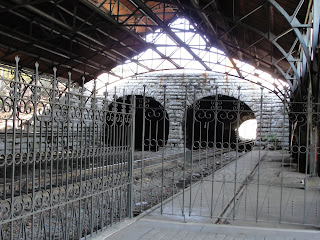Finally thoughts

There's a Party before Lincoln called the “Know Nothing Party” lead by one of his best friends Hugh Lennox bond.
I had to get it word for word it just didn’t seem fitting and I would miss the importance stressed in this from the Ohio history page I really did not know this.
“The Know-Nothing Party, also known as the American Party, was a prominent United States political party during the late 1840s and the early 1850s.

The American Party originated in 1849. Its members strongly opposed immigrants and followers of the Catholic Church. The majority of white Americans followed Protestant faiths. Many of these people feared Catholics because members of this faith followed the teachings of the Pope. The Know-Nothings feared that the Catholics were more loyal to the Pope than to the United States. More radical members of the Know-Nothing Party believed that the Catholics intended to take over the United States of America. The Catholics would then place the nation under the Pope's rule. The Know-Nothing Party intended to prevent Catholics and immigrants from being elected to political offices.

There are so many things that just being in the area we miss if we do not take the time to research the little things.
Thank you and this was a great class
The reason its so hard to find information just on Bolton Hill because its land was divided into other section of the city. I took a look at some books like, “North Baltimore from estate to Development,” by Karen Lew and D Randall Beirne, “Northwest Baltimore and Its Neighborhoods, 1870- 1970”, by Roderick N Ryon, just to name a few.
The areas that I have been talking so much about many of the streets are considered in Reservoir Hill. The book says the area was built like a backwards L parallel to the Falls. Garden St due to the woods dense area is now Linden Ave. Directly on Eutaw Place was a Battle called the Battle of Eutaw Springs in the American Revolution ,
For many of us that have grandparents when we were little the famous Alker Seltzer that she took created by a man called Issas Emerson. Mr. Emerson stayed on Eutaw Place in a 25 room estate and stuck it rich during the 19th century. He founded the Bromo Hotel, Apartment House, and Drug Company.
R
 ecently we have taken a look at some of the residents and the styles of homes and important people that have made Bolton Hill such an outstanding place. Established in the 1850’s became a center of Baltimore’s elite. In time business like Enoch Pratt, The Lyric, Maryland Institute of Art, Bryn Manor for Women, Friends School at Park Ave during the 1800’s and the well known Meyerhof theater. Many of the homes that were geared for writers, artist and students were considered flats.
ecently we have taken a look at some of the residents and the styles of homes and important people that have made Bolton Hill such an outstanding place. Established in the 1850’s became a center of Baltimore’s elite. In time business like Enoch Pratt, The Lyric, Maryland Institute of Art, Bryn Manor for Women, Friends School at Park Ave during the 1800’s and the well known Meyerhof theater. Many of the homes that were geared for writers, artist and students were considered flats.The redevelopment was not an issue for the women and one out spoken woman was Ms. GoodSpeed not even a resident of Bolton Hill. She fought the Supreme Court on Inspectors telling them that their homes needed renovation. BURHA- Baltimore Urban Renewal and Housing Agency met trouble with Mrs. Goodspeed. “It’s like having another cook in our kitchen or having our Mothers-in-laws visit”, stated Ms. Goodspeed. She won her case and many of the orginal building stand to day.
https://jscholarship.library.jhu.edu/handle/1774.2/32648
Title: City Atlas of Baltimore, Maryland, and Environs, Volume I
Author: Hopkins, G.M.
URI: http://jhir.library.jhu.edu/handle/1774.2/32648
Date: 1876
Subject: Baltimore City
Historical Atlas


























